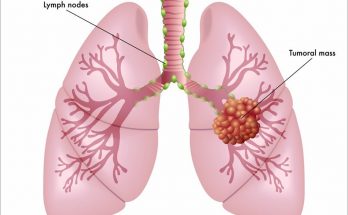COPD (chronic obstructive pulmonary disease) is the disease of lungs. It obstructs the breathing of the affected person. COPD symptoms start with breathing problems. Symptoms include cough, wheezing and chest tightness. Smoking is the main cause of COPD. Inhalation of airborne dust and chemical fumes may also cause the disease. An individual must recieve proper COPD treatment at the early stage. If not, the condition will deteriorate day by day. This article presents the basics of COPD treatment.
COPD Treatment – GOLD Guidelines
Knowing the root cause of COPD is vital to understanding any treatment for COPD. At the time of breathing, we inhale fresh oxygen. The air travels to the lungs through the trachea. The oxygen then diffuses into many small tubes. Finally, the air reaches air sacks called alveoli. In the meantime, veins release the waste carbon dioxide. The carbon dioxide travels through the lungs following the same path of oxygen. Then, lungs pump out the carbon dioxide through the airways. The airways and the lungs have elastic quality. When we inhale air, the air sacks and the airways expand. When we exhale air, the air sacks and airways deflate. In COPD, the airways and sacks lose their elastic quality. The walls between the air sacks are destroyed. They become thick and the more mucus forms in airways. This creates the obstruction to the normal respiration system.
Previously, there were many different COPD treatment guidelines. Each guideline had different risk factors and patterns of treatment. In 1998, a dedicated group of scientists took initiative to formulate a consensus global guideline for COPD treatment. The group was under the initiative of World Health Organization . Their goal was to increase the aware of COPD. The expert committee submitted their report in 2001. The report recommended standard risk factors, medications and treatment of COPD. Their recommendations have been widely accepted and implemented throughout the world. The recommendations are known as Global Initiative for Chronic Obstructive Lung Disease
According to GOLD guidelines, the goal of the COPD treatment is to relieve the symptoms. The aim is to have minimal side-effects. The standard is to improve overall health. This is accomplished by slowing down the progress of the disease. There is no cure for COPD. Therefore, the goal of the treatment is to reduce the progression of the disease. The treatment varies from a person to another person. It depends on the symptoms of the patient. Treatment may include medication, pulmonary rehabilitation, surgery or oxygen therapy.
The guidelines recommend broncho dilator for breathing problems. A broncho dilator is an inhaler that eases the muscles of bronchi system. It allows for smooth breathing. The treatment begins with two puffs of 2.5 units daily. Each puff goes directly into the lungs. It’s side-effects are negligible. Severe COPD patients require higher doses. Patients who have poor lung function may suffer from occasional chest infections. There patients require an inhaler that contains corticosteroids. Your physician may try two types of COPD treatments. This is to find out which one works better on you. The components of the inhaler may be used in oral form also. But, the inhaler is more effective. Besides the inhaler, antibiotic and steroids are also used as COPD treatments.
Oxygen therapy is another recommended process for COPD treatment. If the oxygen level in your blood is lower than the normal rate of 88%, the doctor can suggest for Oxygen therapy. Your doctor will decide the required amount of oxygen you need. Smoking will be fatal to the patient at the time of oxygen therapy. However, if you suffer from COPD, you must stop smoking forever.
Pulmonary rehabilitation is another form of COPD treatment. Pulmonary rehabilitation allows a patient to achieve the highest possible functional capability. This is accomplished through a tailored multidisciplinary program. The program consists of physical exercises. The treatment includes recommended exercises, nutritional therapy, behavioral practices and promotional adherence.
Your doctor may also consider surgery for COPD treatment. This typically occurs when the above-mentioned treatments have failed. There are three types of lung surgery. The first type is lung volume reduction surgery. This is when parts of the lung is surgically removed. This allows the remaining parts to function better. The second type is lung transplant. This surgery is where the damaged lung is replaced by healthy lung. The third type is a bullectomy. This is where the damaged portion of the lung is surgically removed. However, this surgery is very rare.
